One has got to give it to Kim Jong-un, or more appropriately, the neo international statesman, who now with a ‘winner’ lapel on his coat is already in the mop up mode of consolidating and furthering the gains of his Singapore Summit. In just a week after the diplomatic coup, Kim was in China on the 19 Jun 18. Incidentally, this is his third ‘surprise’ visit to the Chinese capital in less than three months. Surprise for the world at large, but not for Kim, as he is on a well thought out game-plan, unfolding to a pre-planned strategy. This article tries to make sense of this game plan based on simple interpretation of facts.
There is no intent to chronicle the details of Kim's early life, for instance, a date of birth shifted back by two years to mark 70 years after the birth of his grandfather Kim II-sung (08 Jan 82/08 Jan 84), schooling in Switzerland under several pseudo names (Chol pak, Pak-un), rise to ultimate power engineered by his father, marriage etc, except to pick out a few snippets from his early life that reflect on his actions in the current times1.
Actually, Kim was a child whom the destiny chose for the helm, otherwise, the favourite of his father Kim Jong il to succeed him was his eldest half brother, Kim Jong-nam. Nam ran out of his father's favours when he was caught attempting to enter Japan on a fake passport thus catapulting Un to the favourite spot. His father described him to be "exactly like him", physically endowed, hot on temperament, never admitting defeat, heavy drinker, smoker, loving the luxuries of life and showing the shrieks of ruthlessness and resolute firmness in his nature. In the wisdom of his father, these qualities made him a better choice than his elder brother Kim Jong-chul who was considered too feminine in nature2. Some of these character traits of ruthlessness and remorselessness would become evident in Kim's personality if one has to go through the records of numerous executions and purging of many senior officials including his family members as ordered by him (execution of his uncle Jang Song-thaek, accused of plotting against the State along with all his family members (sic), ordering assassination of his brother Kim Jong-nam in Malaysia, etc.).
A glance through the violent and brutal suppression of opposition establishing single party supremacy and many crimes against humanity that mark his regime also corroborate some of his character traits. A 2014 United Nations (UN) Report that examined Korea says it all - exterminations, murders, enslavement, torture, imprisonment, rape, forced abortions, sexual violence, persecution, enforced disappearance, prolonged starvation and more. The brutality of the prison camps (as terrible as Nazi Camps) has been described in all its chilling details by the International Bar Association War Crimes Committee3.
While all the above may give a fair sense of the brutality, resoluteness, ruthlessness and remorselessness of the personality of the supreme leader of North Korea, it is interesting to note that the same man is a firm, aggressive, shrewd and a determined promoter of his country's supreme national interests and is treading carefully but relentlessly, following a well thought-out ‘game plan’ as stated earlier. How this plan has been unfolding over the years is an interesting journey.
Songun Chongch'i
Kim's grandfather, Kim Il-sung laid the roots of the ideology of ‘Songun Chongch'i’, or military first. This ideology designates the people's military over all other aspects of state and society. Military as per Songun, is the "supreme repository of power" that dominates the politics and economics of the State and guides domestic policy and international interactions. The same ideology was carried forward by his father Kim Jong-il. Consequently, an impoverished 24 million inhabitants of North Korea supported a military of more than one million where all the meagre resources were usurped by it leaving the state incapable of modernisation or economic reforms4.
In his first ever speech made on 15 Apr 2012 to commemorate the 100 years of his grandfather, Kim Jong-un, the then newly appointed Chairman of the Workers Party of Korea, the Chairman of Central Military Commission and the Chairman of the National Defence Commission started his journey with total adherence to Songun Chongch'i. He said, "Let us march forward dynamically towards final victory holding high the banner of Songun". He also said, that his "first, second and third" priority were to "strengthen the military"5. An amazingly focused mind of the young dictator rings clear - "build military might first". Why? Because it begets respect; because it ensures regime's survival, and because it keeps the threat of imperialists at bay...
That Kim Jong-un actually walked his talk became known to the whole world as it witnessed the steady rise of North Korea's military in a very planned manner, ever since Kim took the reins. The most notable of this capability build up was the development of the nuclear capability. Kim knew very well that the route to achieve asymmetric unconventional capabilities in double time lay in relentlessly pursuing the development on a twin track: (1) develop/acquire/grab/steal nuclear weapons technology somehow; and, (2) conduct tests to realise what was developed6. In both these, Kim's grandfather as well as his father had already laid deep roots. Kim simply carried on the legacy single-mindedly. In the period 1950-1980 Pyongyang reportedly received Moscow's assistance in building a nuclear research reactor, as also, assistance in the design for a light water reactor. Chinese help came in the seventies in the area of development and production of ballistic missiles. Pakistan's infamous nuclear scientist and the father of that country's nuclear programme, Abdul Qadeer Khan, reportedly shared with North Korea, the centrifuge technology as well as the knowhow for the uranium route to making nuclear bombs. Also, the scientists of both countries worked jointly on ballistic missiles during the period of Iraq war (1980-88)7.
While at one hand the requisite technologies were being developed/grabbed covertly, bit by bit, the same continued to be put to test alongside. The nuclear testing began in Oct 2006 with a plutonium-fuelled atomic bomb of yield equivalent to 2 kilotons (KTs) of Tri Nitro Toluene (TNT). In the next test in 2009, the yield went up to 8 KT of TNT. In the next two tests in 2013 and Jan 2016 respectively (both under Un), the yield went up to 16 KT. Finally in Sep 16, the same touched 35 KT (Hiroshima bomb was 16 KT).

While nuclear testing was progressing on one side, efforts were on to develop the technology for the miniaturisation of nuclear weapons so as to fit as warheads in ballistic missiles. It was in Jul 2017 that a US intelligence assessment concluded that North Korea had developed the technology to miniaturise the nuclear warhead to fit its ballistic missiles. Soon, North Korea reported that that in its Nov 17 missile test, the newly developed Intercontinental Ballistic Missile (ICBM), Hwasong-15, had achieved an altitude of 4500 km (far above the international space station). The missile was claimed to have a potential range of 13,000 km, though it actually covered a range of 950 km before plunging into the sea 201 km west of Aomon prefecture in Japan's Exclusive Economic Zone (EEZ). A potential range of 13000 km implies a capability to reach anywhere on the US mainland.
Quite aware and guided by two ominous facts of history, Libya giving away its Weapons of Mass Destruction (WMD) in 2003 under US pressure and an attack on the regime eight years later, and destruction of North Korea's reactor in Syria by Israel in 2007, Kim's lineage knew too well that nuclear weapons are the tickets to regimes continued existence. An existence anchored on the deterrence flowing out from a credible and survivable nuclear force, capable of assured nuclear retaliation. Development of Musudan Intermediate Range Ballistic Missiles (IRBMs) KN-08, Hwasang-15 ICBMs, sea-launched cruise and ballistic missiles based on surface ships or submarines, production of fissile material, miniaturising nuclear warheads and articulation of an assertive nuclear weapon strategy of first strike along with assured retaliation capability, are actions that are all in consonance with the above line of thought so comprehensively taken over by Un from his ancestors and pursued with all vigour and relentless dedication. Un famously stated, "nuclear weapons serve the purpose of deterring and repelling the aggression and attack of the enemy against the DPRK and dealing deadly retaliatory blows at the strongholds of aggression".8
The journey that unfolded as per a well thought out game-plan and which saw North Korea relentlessly pursuing its nuclear capability build up, actually came to a climax on 21 Apr 18 when Kim announced to the whole world that his country will stop any further nuclear tests and launches of its ICBMs as Pyongyang's nuclear capabilities stand "Verified". What an amazing six years chase for total mission accomplishment (15Apr 12-21 Apr 18). Incredible indeed9!
Enter Byungjin
Early enough in the course of the this journey and after Kim had already put his country firmly and irreversibly on the one-way path of nuclear capability build up, he started to look sideways from the Songun Chongch'i blinkers. In that, he advanced a new ideological slogan, ‘Byungjin’. This word means ‘parallel progress’. By adopting this slogan, Kim indicated that his strategic thrust will be on two parallel paths, namely economic development and military progress.
In fact the story of Byungjin is very interesting. Kim's grandfather ruled on the idealogy of ‘Juche’ which means self-reliance, while his father single-mindedly pursued Songun Chongch'i (military first). Very intelligently, and without either proving his father or grandfather wrong, Kim adopted a combined essence of both the above ideologies as his guiding strategy - self-reliance hinting remotely to sound economy and Songun to military capability build up. While Byungjin was adopted by Kim as early as 31 Mar 2013, it was only after putting North Korea firmly on the path of nuclear capability development and after solidifying his grip on power by embracing the coercive tools of his father and grandfather. 10 In Byungjin, Kim envisioned a socialist strong and a prosperous nation through strengthening deterrence on one hand and speeding up economic construction on the other.
Talking of economic re-construction, while Kim' early years of grooming and education in Western Europe ensured that he never really abhorred the joys of capitalism, he had different plans for his country. His compulsion was to bring about the economic development of a state-controlled economy while keeping an iron grip on power. China's model of "reform and opening" ushered in by Deng Xiaoping in the 1980s was a ready example of the meteoric rise of that country keeping intact the one party grip. The demise of Soviet Union in 1990 had probably deterred North Korea in opening its economy, but China had always been telling it that it was possible to maintain a one-party regime while opening up to the world. Three visits to China in a matter of less than three months has some connect to Kim's inclination to go in for the Chinese model. In his 21 Jun visit, Kim toured Chinese technology and science hubs. It therefore came as no surprise, when post active discussions in the three meetings, the Chinese President announced, "We are happy to see that the Democratic People’s Republic of Korea (DPRK) has made a major decision to shift the focus to economic construction (with Chinese signatures?) 11"
So what are the concrete steps taken by the young autocrat towards economic reconstruction of his country? The economic landscape of the country is actually very unenviable. This probably indicates the mammoth dimensions of challenges that lie ahead of Kim. In the years from mid-1990s through mid-2000s, the country suffered famine and widespread starvation. Significant food aid was provided by the international community till 2009, which declined substantially as the sanctions regime kicked in. South Korea in particular, which used to provide most aid and economic assistance, got a big negative jolt in 2010 with the sinking of its warship Cheonan and the shelling of the Yeonpyeong Island by Kim's forces. Things kept on worsening as the years rolled by. Finally in Feb 2016, South Korea ceased all its bilateral economic activity with its northern neighbour by closing the Kaesong Industrial Complex. This happened on the heels of North Korea's fourth nuclear test in Jan 16. Thereafter, post its Sep 16 nuclear next, strict sanctions were slapped by United Nations Security Council (UNSC) on North Korea which targeted its foreign currency earnings particularly coal and other mineral exports.
Battered like this over the years, both by mother nature as well as the international community, North Korea’s Gross Domestic Product (GDP) in real growth rate showed a negative of -1.1% in 2015. In fact, since North Korea does not publish reliable National Income Accounts data, estimates are therefore to be derived from purchasing power parity (PPP) or extrapolated from an Study on GDP estimates commissioned by the Organisation for Economic Cooperation and Development (OECD) in 199912.
A report of Mar 18 by one Professor William Brown titled, "North Korea's Shackled Economy", carried by The National Committee of North Korea (NCNK) based in USA, gave a fairly recent picture of the state of things just prior to the Jun 12 Summit. A brief snapshot is
presented13:
‘The people of North Korea are very poor. The country's per capita GDP estimated between $700 -2000 places North Korea at the bottom of world ranking. Worse still is the fact, that a large part of this GDP is spent by the Government for itself or its military and very little goes to peoples' consumption… People continue to suffer from shortages of food, fuel, electricity, running water and other necessities… The country runs a persistent and a large merchandise trade deficit, financed by small amounts of foreign aid, net service sector earnings, illicit activities and remittances from overseas workers and compatriots… The UN sanctions have banned or restricted many categories of North Korean imports. Even China has sharply cut its purchases from North Korea. Due to non-membership of world's marketing systems like World Trade Organisation (WTO) countries have slapped high tariffs on NK exports… The net position, sometimes in the beginning of this year was that a crises was fast seen to be approaching. In that, it was reported by the open source that out of total assets of around 4 bn USD left over to Kim by his father, a large chunk had already been spent (some 3.6 bn USD) in the nuclear programme and a point of implosion out of cash crunch was imminent.’
The above state of affairs also explains the ‘other compulsions’ of Kim that made him announce a halt to further nuclear tests and launches besides the emphatic assertion that the halt is driven by completion of nuclear weapon capability.
Getting back to the economic thread, it is not that Kim did not try internal measures of correction and relief; these probably proved to be too little to make any substantial difference. This assessment is based upon the end state in Mar 18 in North Korea as per Professor Brown's report, quoted above. In fact, Kim did try to make the economy more de-centralised and productive. In that, he allowed the spread of market activities providing incentives for individuals and families to work in their own self-interest. He also tried to loosen up the vice-like grip of central planning by taking some token steps such as these:-14
- Under what Kim called the "Socialist Corporate Responsible Management System" the factory managers were granted more leg room. In that, once they satisfied the state quota allocated to them, they were free to buy from suppliers and sell to customers of their choice at prices negotiated between them.
- State Owned Enterprises (SOEs) could set up subsidies in other areas of business. Also independent entrepreneurs were allowed to set up operations under the wings of SOEs.
- Members of cooperative farms could cultivate plots of their own of almost 100 sq m, the produce of which could be sold in the local town market (called Jangmadang).

While all these and more happened internally, it hardly made a difference on the miserable plight of a sinking economy in macro terms. This is so because the shackles of state-control continued to strangle the economy directing more than 50% of all economic activity and retaining ownership on almost all sources of production. Kim probably realised it too well that all the above measures and more will not even scratch the surface of the rot. If a real turn-around was to be brought about, then following major steps needed to addressed, head-on:-
- Easing of the US and UN sanctions, the tightening stranglehold of which was suffocating the economy each passing day.
- Re-starting international trade with other countries as a result of the above.
- In the long term, trying to enter the World Trade Organisation (WTO) arrangement thus putting in place, a sustainable tariff regime.
- Attracting the much needed capital from international investors to do up infrastructure, power grids, buildings and transportation in North Korea.
- For the immediate, removing of irritants and hurdles in opening a full spectrum trade relationship with South Korea (commodities, tourism, sports and more) and bringing back the ‘life-line’ trade relationship with China, which recently had suffered a setback due to shrinking of demands by Beijing.
The activities of Kim Jong-un ever since the beginning of this year, unfolded precisely towards addressing the above issues. A brief corroboration:-
- Apr 27 - After being at his belligerent best in whole of 2017 and after conducting a total of 16 missile launches in 2017 alone, not to talk about Cheonan and Yeonpyeong, Kim showed up with "all smiles" at Panmujom Peace House in the de-militarised zone for his first meeting with SK President Moon Jae-in15.
- At the above summit while Kim worked through the feel good rhetoric such as de-nuclearisation of the Korean peninsula, end of Korean war, towards the Korean re-unification and more, he was firmly fixated to economics. His target was the possible opening of the two economic ventures, the Kaesong Industrial Zone, and the Mount Kumgang Tourist region, both in North Korea.
- Hyundai, the South Korean conglomerate, who was the operator of tours to the two economic ventures earlier had announced plans to resume these activities. Kim wanted to finalise that.
- In concert with the above, tourism as an industry that has the potential to generate hard currency was his next macro target. To attract South Korean tourists, massive construction activity is already in progress at the Wonsan-Kalma East Coast tourist area. These include the construction of an artificial lake and other infra. He tried to put it out in the show window.


It surprised no one therefore when Kim was back in South Korea on 26 May 18 for another surprise meeting with the South Korean President just preceding his historic summit with President Trump.
Getting back to China, Kim's three successive meetings with President Xi Jinping on Mar 25-28, May 7-8, and Jun 19-20 respectively, also fall into place perfectly. Eager to usher ‘the capitalism with Chinese signature’, following its strategy of phenomenal growth while keeping the one party grip over the State fully intact, reviving the newly shrunk demands of North Korean exports to Beijing, securing the continued supply of fuel and food to the Hermit Kingdom was all on Kim's agenda. While the new pupil of President Xi learnt his lessons well, he never failed to secure his agenda of which he was focussed end-to-end. With his new found legitimacy and his reformed avatar now professing a far distant "complete de-nuclearisation of the Korean peninsula, China found a good enough reason to make a strong case of a 100% lifting of sanctions and reviving what was reduced in bilateral trade terms.
The roller coaster is on. Kim looks forward to investments from US into North Korea in the field of technology and entrepreneurship guidance from the Silicon Valley. Japan and Russia are likely to be addressed shortly. Presently, the US Secretary of State Mike Pompeo has just finished meeting Kim on 05 Jul 18 with an aim to continue consultations and implement the forward progress made during the Kim-Trump summit16.
Kim is well prepared. The ‘game plan’ purported is out in open to unfold as this:-
- Start with the father's ideology of Songun Chongch'i.
- Single-mindedly build nuclear capability to such a level of credibility that it has the power to summon President of the most powerful country in the world at the negotiating table.
- Once firmly rooted on the path of nuclear capability build up, usher in the ideology of Byungjin (parallel development) without bringing it into conflict with either Songun (military first) of Juche (self-reliance), thereby start looking outwards from the Songun blinkers towards economic reconstruction.
- Get a shot in the arm by doing a diplomatic coup. Earn survival, legitimacy and a status of a neo- international statesman all in a matter of one Summit!
- Knowing fully well that the internal corrections won't have much impact in a tightly controlled economy, and also seeing the imminent doom of economic implosion only months away, start looking to address the macro issues of easing sanctions, re-starting international trade, becoming a part of the WTO and more.
- For the immediate, start to address the core issues with South Korea and Beijing.
Game plan indeed!
End Notes:
- https://www.en.wiki[pedia.org.wiki>kim-jong-un. Accessed on 24 Jun 18
- https://wwwbiography.com>peoples>kim-jong-un-military-leader-dictator-biography. Accessed on 24 Jun 18
- https://www.vox.com> as -terrible-(as)-nazi-camps:a-chilling-new-report-on-north-korea's-prison-camps. Accessed on 24 Jun 18
- https://www.brrokins.edu>north-korea-military -first-policy:a curse-or-a-blessing. accessed on 24 Jun 18
- https://www. nytimes.com>in-first-speecgh-kim-jong-un-affirms-north-korea's-military-might. Accessed on 28 Jun 18
- https://www.cfr.org>what-are-nort-korea's-military-capabilities. Accessed on 28 Jun 18
- vii ibid
- https://www.38north.org>NKNF-nuclear-weapons-strategy-bermudez.pdf. accessed on 29 Jun 18
- https://www.bbc.com>news>north-korea-halts-missile-and-nuclear-tests,says-kim-jong-un.Accessed on 30 Jun 18.
- https://www.globalsecurity.org>byungjin. Accessed on 30 Jun 18.
- https://www.news18.com>china-gives-economic-lessons-to-north-korea. accessed on 30 Jun 18
- https://www.economy.com>north-korea/economic-indicators/moody's-analytics. Accessed on 01 Jul 18.
- https://www.ncnk.org>special-report-north-korea's-shackled-economy (2018). Accessed on 02 Jul 18
- https://www.news18.com>km-jong-un-heralds-more-'chinese style'-economic-reforms-in-north-korea. Accessed on 02 Jul 18
- https://www.cnbc.com>how-kim-jong-un-wants-to=develop-his-economy-and-secure-his-regime. Accessed on 02 Jul 18.
- https://www.cnbc.com>secretary-of-state-pompeo-will-meet-kim-jong-un-on-jul 5. Accessed on 02 Jul 18.
(The paper is the author’s individual scholastic articulation. The author certifies that the article/paper is original in content, unpublished and it has not been submitted for publication/web upload elsewhere, and that the facts and figures quoted are duly referenced, as needed, and are believed to be correct). (The paper does not necessarily represent the organisational stance... More >>
Image Source: https://www.scmp.com/news/china/diplomacy-defence/article/2139549/how-china-and-north-korea-saw-talks-between-xi-jinping

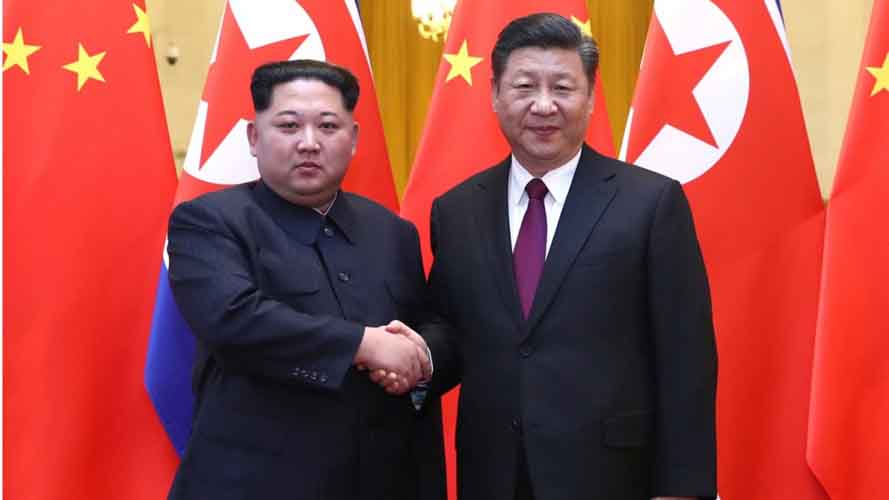
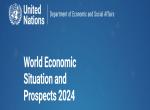
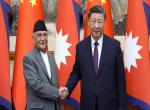

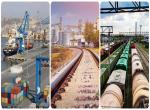
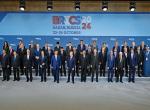

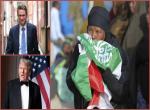
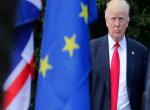
Post new comment